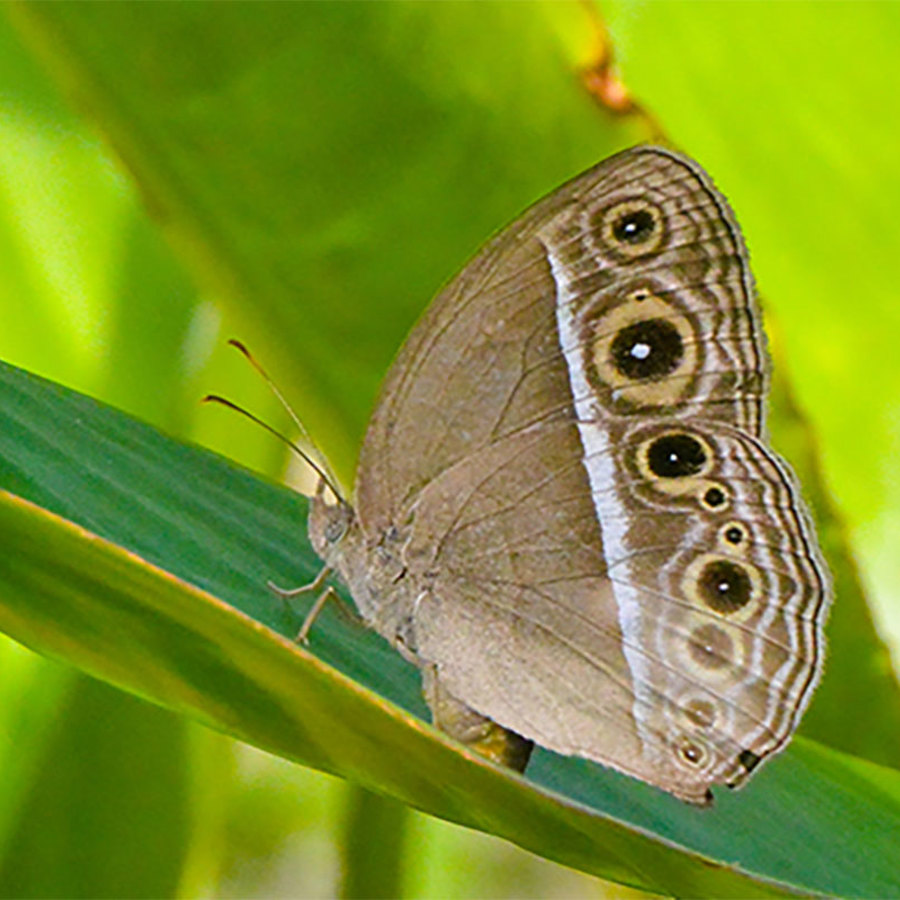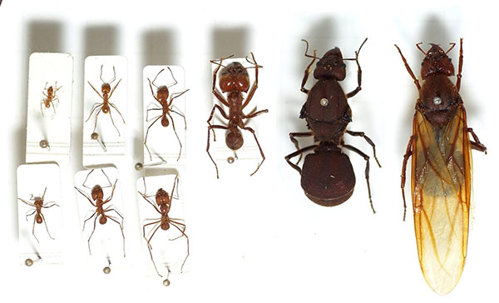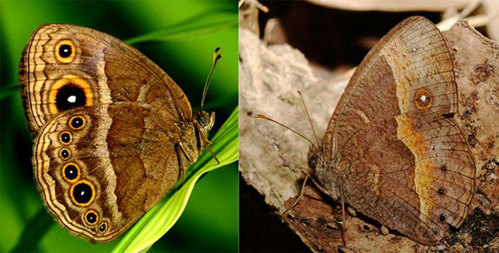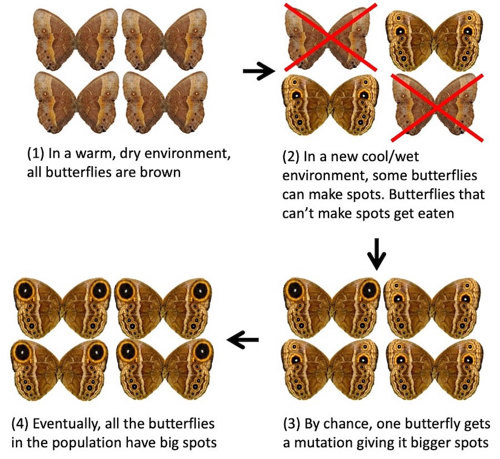
What is developmental plasticity?
April 1, 2015

- Related Topics:
- Evolution,
- Epigenetics,
- Environmental influence
A graduate student from Australia asks:
“Developmental plasticity in evolution – would you please explain it. And how does it differ from DNA methylation?”
Developmental plasticity is just another way of saying that the environment plays a big role in our traits too. We are more than just our genes.
One way the environment can affect our traits is by changing how our cells use our DNA. So in one condition a gene may be turned way up and in another it might even be off.
These kinds of changes are called epigenetic. Basically, the DNA is changed in a way that is not always passed on to the next generation.
In other words, when parents move to a new environment, their kids may not inherit their epigenetic changes. If two parents have a gene turned way up, their kids might have theirs turned way down if they are born into a different environment.
There are many ways to cause an epigenetic change. One way is with DNA methylation, but there are many others. You can read more about how epigenetics and methylation work here.
Now you might be wondering what any of this has to do with evolution. After all, evolution is usually thought of as heritable changes that are passed on. Epigenetic changes are not (usually) inherited.
But plasticity is actually very important in evolution. By letting individuals survive, it gives the species a chance to hit upon a new mutation that lets the whole species survive. You need to be alive to evolve!
Developmental Plasticity
Developmental plasticity is incredibly important. Genes are not your fate. Your environment plays a huge role as well.

Think about someone who spends a lot of time exercising. This person will have bigger and stronger muscles than someone who does not exercise. This is because our muscle size is not set in our DNA. Instead, the environment (how much you exercise) is very important.
This is also why we can move to different places in the world. If people had no ability to adapt to different environments, no one could live in Denver, or climb mountains. Because of plasticity, we are able to eventually adjust to a lower oxygen level and be just fine.
Both of these plastic traits are reversible. If you stop exercising, your muscles will get smaller. If you move to a lower elevation, you re-adjust. But some plastic traits are not reversible.
One example of this is height in humans. Height is influenced by both genetics and nutrition. If a child does not get enough food, they will be shorter than they might otherwise have been. Since people stop growing while they are teenagers, this is permanent.
But if the underfed, short person’s own children get enough to eat, they will grow up taller. The nutrition-caused shortness of the parent is not passed on to the children.
A Butterfly that can Change its Wing Color
Another cool example of developmental plasticity is the “squinting bush brown butterfly” (Bicyclus anynana), from eastern Africa. It is actually able to vary its wing color depending on the season!
In the warmer dry season, the butterfly is entirely brown. But in the cooler wet season, the butterfly has large eyespots on its wings.

Why does it do this? How is this beneficial?
It turns out that in the dry season there are lots of dead leaves everywhere. So the butterfly uses its brown wings to look like a dead leaf and hide.
But in the wet season, everything is green. The butterfly stands out against the leaves and can be seen by predators.
In a wet environment, it is better to have large spots on its wings. These spots confuse predators. Instead of biting a butterfly’s body (which would probably kill the butterfly), they are likely to bite at the wings.
These butterflies pull this off based on temperature. If the butterfly grows up in a warm temperature, it will be entirely brown. It will be spotted if it grows up when it is cool.
This developmental plasticity lets the butterflies survive in both warm and cool seasons. The butterflies do not pass on their spots or brown color to their babies. Instead, the next generation of baby butterflies can have spots even if their parents were brown, or be brown even if their parents were spotted.
Plasticity and Evolution
So how is plasticity related to evolution? Essentially, developmental plasticity allows an organism to survive in an unusual, possibly stressful environment. And as long as it can survive for a few generations, it is possible for mutations to happen that will make the animal more fit.
Let’s consider a hypothetical example using butterflies like the ones I mentioned earlier. Remember, these butterflies can be entirely brown in the dry season, or have spots in the wet season. Each of these patterns is best in only one environment.
So now think about a group of these butterflies that lives in an entirely dry/warm environment. All the butterflies will be brown all the time.
Suddenly, some butterflies get moved to a new place that is always wet and green. Luckily, they can survive because they can make spots on their wings when it is cool.
Any of these butterflies that can’t make spots get eaten. But the spots that appear because of plasticity aren’t perfect … a good number of these butterflies are still eaten. Plasticity has allowed the butterflies to survive but they are taking a beating in their new environment.
At this point you might be asking, OK who needs evolution anyway? Plasticity is doing just fine.
The key is that there may be a better way. Imagine that by random chance a mutation happens in one of the butterflies that gives it bigger spots. These bigger spots are even better at fooling predators and so, within a few generations, all of the butterflies have these large eyespots.
But there’s a catch. This new mutation also makes it so the butterfly will develop spots no matter what conditions it is in. Essentially, the plasticity is lost. The spots are now permanent. Even if a dry season happens, the butterflies will have spots.

Over time, the ability to be entirely brown will be lost. The originally plastic trait will become permanent.
In this case, being able to sort of adapt bought the butterflies enough time to stumble on an even better mutation. Plasticity helped evolution along.
Cases like these are the most obvious way that developmental plasticity is crucial to evolution. Without it, a species would die out if the environment changed. Instead, plasticity allows a species to survive, until mutations happen that help it thrive in the new environment.
And Now a Bit of Controversy
The explanation I have given is the one accepted by most biologists. There are, however, some who think that developmental plasticity explains all (or almost all) of evolution.
These scientists would say that the main reason why animal species look different is because they grow up under different conditions. However, an overwhelming amount of evidence argues against such a view.
So while plasticity certainly plays a role in evolution, the vast majority of differences between species are caused by mutations and genetic differences. Plasticity is most likely a useful stopgap measure until something more permanent comes along.
Read More:
- Natural History Magazine: Dutch Hunger Winter: human malnutrition, plasticity, and methylation
- Nature: Debunking a controversial view of plasticity and evolution
- Journal of Experimental Zoology: An academic article about how epigenetics, plasticity, and evolution are intertwined

Author: Abbey Thompson
When this answer was published in 2015, Abbey was a Ph.D. candidate in the Department of Genetics, studying the molecular basis of evolution in David Kingsley’s laboratory. She wrote this answer while participating in the Stanford at The Tech program.
 Skip Navigation
Skip Navigation
